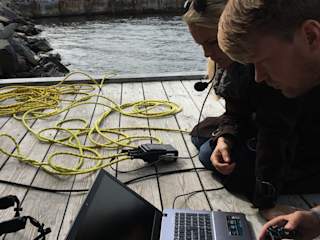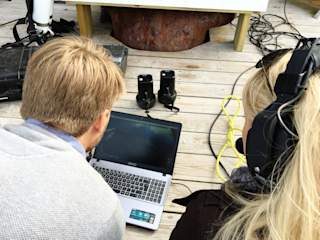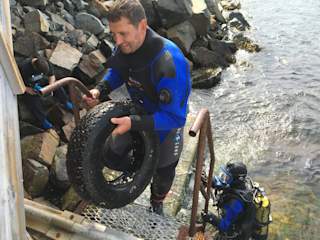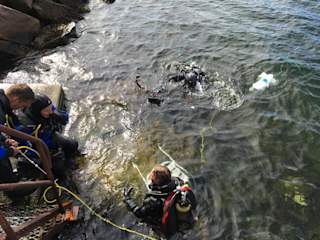The Oslo fjord is in many ways a trademark of Norway's capital and storngly interpretated in the city's culture. Wether you just gaze at the view of it on a sunny day, or perhaps you got to work by one of the local express ferries. You might be kayaking on regular basis or enjoy lazy days on a local beach in the summer..
The fjord has been arena for many historical events. The military ship, Blücher (launched 1937), was the lead ship of the German armada headed for Oslo. The ship was sunk in the Oslofjord by Norwegian military at Oscarsborg Fortress on 9 April 1940, the first day of the German invasion of Norway during World War II.

Sinking of Blücher
Sinking of Blücher from Oscarsborg Fortress Photo: National Archives of NorwayBy sinking the ship the Norwegian king and government were saved from being taken captive in the first hours of the invasion. The number of casualties is unknown, but the loss of life probably ranges between 600 and 1,000 soldiers and sailors. The wreck remains on the bottom of the Oslofjord.
Today the wreck is a popular site for eager scuba divers - although very few have the opportunity to dive down to 70-80 metres depth to see it. Of course this is one of the wrecks we plan to dive on when the Pioneer is ready!
Despite the interest and wide appreciation of the Oslo fjord, we tend to pay little to no attention to what's going on below the surface around the historical wrecks. A team of reporters invited us to bring our drone along and spend a day at Nesodden helping them to film the leader of WWF Norway, Nina Jensen, diving and mapping out marine litter for Saturday night news on NRK.
Using Blueye really helped with the reporting! This opens up a new world of opportunities for nature filming and documentaries.

Live interview under water
Performing live interview under water is much easier when you can see what's going on! Photo: BlueyeThis was first time NRK performed a live underwater interview. With a special scuba diving mask, Nina could talk directly to the reporter on shore. Using Blueye's PioneerOne as a "digital camera man" following the group while searching for trash on the seabed, the reporter could point out directions and be part of the search and simultaniously ask relevant questions for the interview.
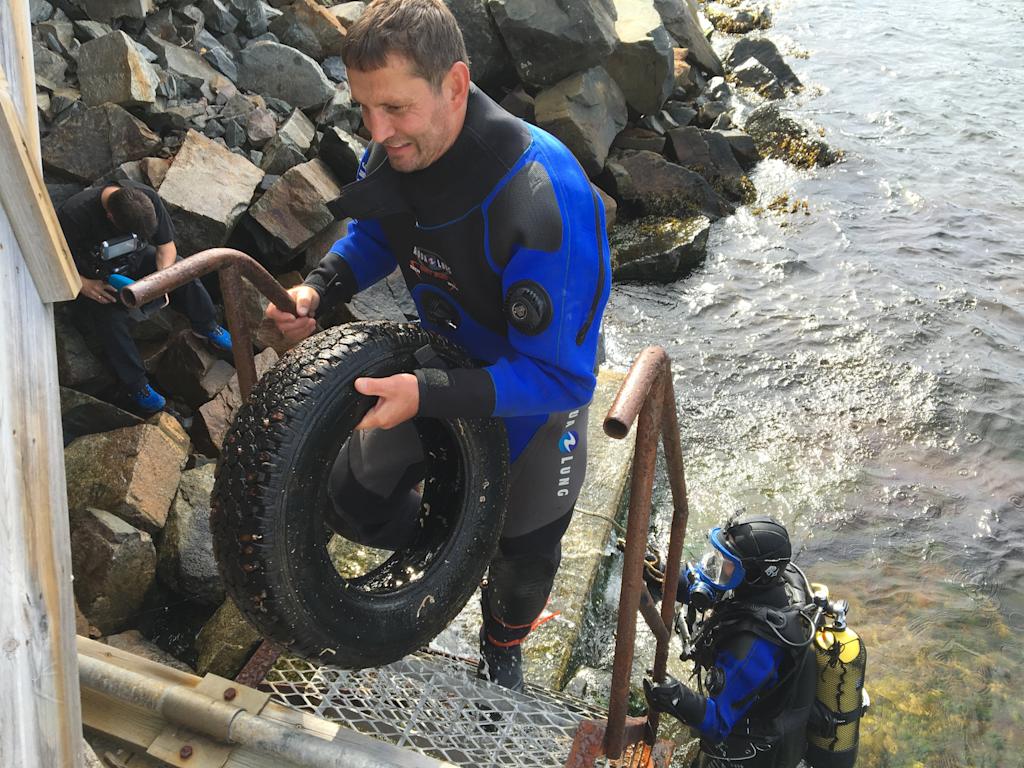
A car tyre was found just off the dock
Car tyres happen to be the largest source of micro plastics in the sea along the coast of Norway. Photo: BlueyeNot un-expected, we found a lot of litter on the seabed; car tyres, chairs, plastic bags and bottles. Three divers went in to get the trash up. Using the drone we could follow them, and also help out by telling Nina what we saw and to pick it up.
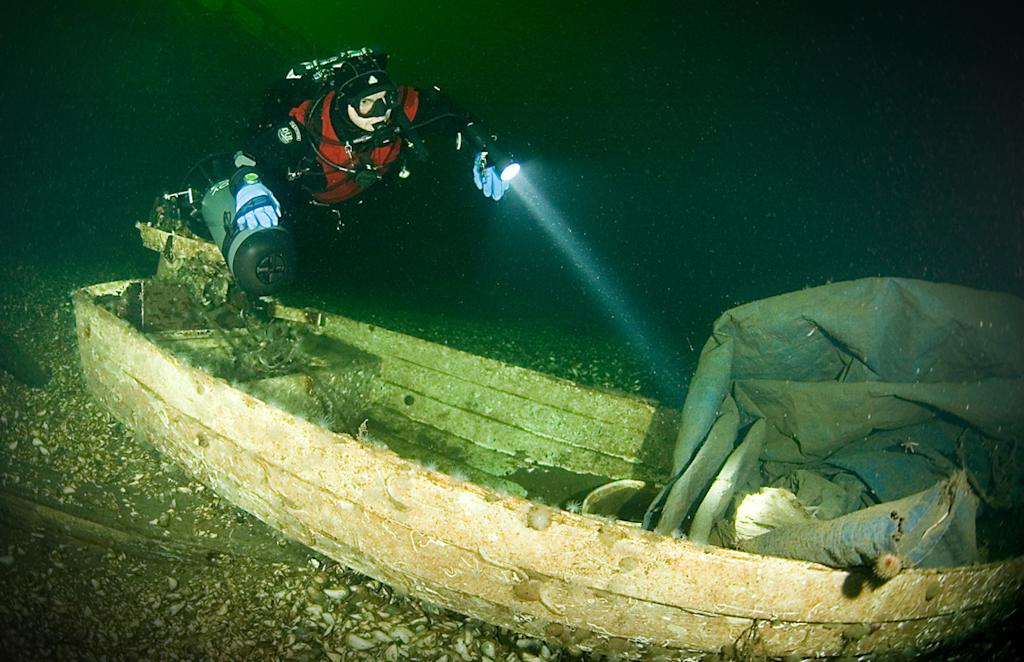
Sunken dinghy
This dinghy is just one of many on the bottom of the Oslo fjord Photo: Fredrik MyhreLater we were told that divers from the local dive club often clean up the seabed in this area, yet it wasn't clean at all. They shared some photos with us, from previous dives, showing dinghies, fishing nets and even CARS!

Lobster and fish caught in lost fishing net
Lost fishing nets - also known as ghost nets - continue to catch fish and other species for years and years. Photo: Fredrik MyhreThis is not the first time Blueye's drones have been used to map marine litter; the first milestone for the company was to develop and produce the first prototype in time to come along across the Atlantic Ocean on the scientific expedition, eXXpedition Equator in 2015, where the drone was used to map marine litter around brazilian ship wrecks.
We hope the Blueye drones will be used in many more ocean cleanup projects in the future, and strongly believe we open people's eyes to the great challenges marine litter causes.

